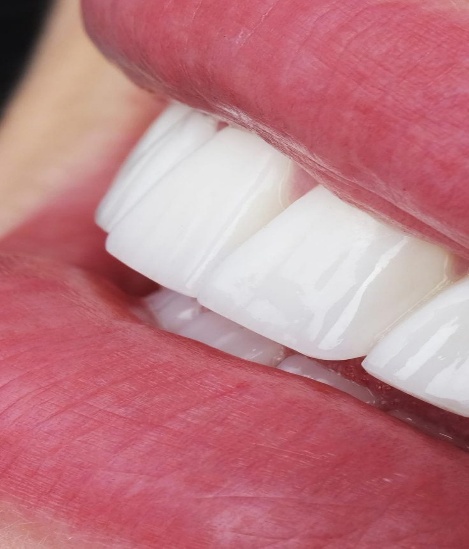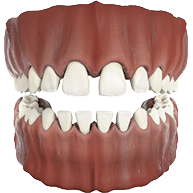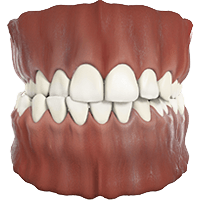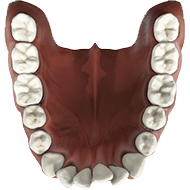Veneers are the cosmetic dental procedure that can completely transform smile by improving dental aesthetics. Dentist London recommends patients dental veneer treatment to resolve their minor teeth flaws such as gaps, chipping, and discolouration. Veneers are thin, precisely crafted shells that adhere to the front of teeth to give them a natural-looking appearance.
In dental veneer different varieties are available according to individual dental structure, span of usage and cost, so if you have gaps between your teeth, or you want the least tooth preparation during veneer place then you should explore various kinds of veneers, each with special qualities and advantages, select the best veneer according to your dental need to make your smile perfect.
Porcelain Veneer
Porcelain veneers are expertly manufactured to replicate the colour and translucency of natural teeth by using premium ceramic material. If you want long-span treatment for restoring teeth gap, and extreme teeth discolouration that does not respond to dental whitening treatment then porcelain is an ideal fit for you.
Benefits
Porcelain veneers are made of high-quality ceramic that provides a realistic and natural look by reflecting the light same as natural teeth do.
Incredibly resilient, and easy to withstand cracks and fractures, these properties make it long-lasting at least 10 to 15 years.
Porcelain is a stain-resistant material that is not easily stained.
Cost
The cost depends upon the experience of the cosmetic dental surgeon, the usage of advanced technology and the location of a dental office. The average cost is £ 800 to 900.
No preparation veneer or Lumineers
A brand of porcelain veneers that are incredibly thin and require little to no enamel removal, only 0.2mm to 0.4mm enamel layer is removed for veneer placement. If you are seeking a less invasive and reversible solution, then this type of veneer is an ideal choice for you. It is good for restoring minor flows.
Benefits
Enamel conservative option.
As it requires the least tooth preparation it can be reversible.
It gives a natural appearance.
Cost
The average cost of no preparation or laminate veneer is £900 to 1000.
Composite veneer
Composite veneers are immediately restored to chipped or fractured teeth. A tooth-colored resin polymer that is utilized to get the desired look, without tooth preparation. The dentist cleans the teeth, directly applies resin and sculpts into ideal tooth anatomy. Long-lasting results around five to seven years. If you require a fast repair for small cracks, discolourations, or chipping then the composite veneer is an ideal fit for you.
Benefits:
Budget-friendly.
Less time-consuming can restore the tooth in only one visit.
Tooth preparation is not required.
Cost
The cost of composite veneer is approximately £ 325 to 400.
Zirconia veneer
If you require the most durable, stain-resistant and aesthetically high-quality veneer, then zirconia is best for you. It is composed of the incredibly resilient material , zirconium dioxide but it’s more expensive than other veneers. Zirconia veneer requires 0.8 mm to 1.5mm of tooth preparation but advanced monolithic zirconia is an innovation that is ultra-thin with incredible durability.
Benefit
Long-lasting.
Able to tolerate strong biting forces.
Resistant against discolouration and chipping.
Cost
Zirconia veneer is more expensive than other veneer varieties, it is approximately £ 600 to 1200.
Temporary or Removable Veneers
These veneers are Ideal for short-term use, or as a trial before permanent veneers. These are specially designed acrylic shells that fit over the teeth attached with temporary cement; less resilient than other types of veneers that are completely seated and adhere to the tooth surface. These veneers are made to protect and maintain aesthetics until the dentist makes permanent long-term veneers.
Benefits:
Reversible and non-invasive.
Less expensive than permanent alternatives.
Simple to take out and put back in.
Cost
The cost of temporary veneers is approximately £ 300 to 450 per tooth.
Palatal veneer
Palatal veneers protect the inner surface of teeth and repair the damage caused by wear, erosion, or bruxism. It’s ideal for restoring and strengthening back teeth, not for aesthetic improvement. Dentists prepared the back surface of the teeth similarly as in other types of veneer and cemented the veneer posterior surface of the tooth.
Benefits:
It keeps the tooth strong and brings it back functionally.
Adds more durability.
Cost
The average cost of palatal veneer is £ 500 per tooth.
Selecting the Proper Veneer
Before selecting the right veneer for you, consider some important factors that impact durability, aesthetic outcome, maintenance, and your dental health.
Selection of Materials
Selection of veneer material based on the aesthetic and functional requirements, porcelain, composite, and zirconia are the common materials used for long-lasting and complete smile makeovers.
Lithium silicates: An advanced material with improved strength and translucency used with advanced technology.
Dental Health
Dental Health: Patients with healthy teeth and gums are the ideal candidates to get veneers. Before veneer application, Dentists restore cavities, gum disease, and other oral health conditions to increase the durability of veneer.
The structure of teeth: A sufficient layer of enamel is required to support veneer, particularly for porcelain or zirconia veneer varieties. In severe damage to teeth with no tooth support dentists consider dental crowns for protection of tooth structures.
The desired aesthetic result
Colour: The ideal property of veneers is the hue that makes it nicely blend with your natural skin tone and teeth. Dentists use shade guidelines to select an ideal fit for you.
Dimensions and Form: The veneer shape and outline should contour according to your face outline and smile line. Such as your front teeth veneer following your face shape.
Symmetry and Alignment: The veneers will appear cohesive and natural with the remaining teeth if they are properly aligned.
Veneers’ Function
Cosmetic Adjustment: To fix gaps, chips, discolourations, or mildly misaligned teeth.
Needs for Function: Porcelain veneers may be more advantageous for patients who require structural support for weak or damaged teeth such as palatal veneer.
Tooth preparation
Selection of veneer according to enamel preparation, enamel support is essential for veneer support. Such as conventional and little or no preparation veneer.
Conventional Veneers: To ensure a veneer fits better, enamel must be removed. Such as porcelain, composite and zirconia.
Veneers with little to no preparation (like Lumineers): Need little to no loss of enamel. Ideal for people who have thinner teeth or few flaws.
Lifestyle and Maintenance
Lifestyle: Dentist advice to reduce intake of drinking a lot of coffee and avoid smoking. Porcelain veneers because they provide better stain-resistance in case of poor lifestyle.
Maintenance: Although porcelain veneers require little maintenance, regular preventive care treatment improves oral health and durability. Composite veneers require more frequent touch-ups and repairs.
Anticipated Lifespan
Veneers made of porcelain with proper care endure ten to fifteen years or longer.
Composite veneers: usually last five to seven years and may need more frequent maintenance.
Occlusion and Bite of the Patient
If you have severe bite problems in posterior teeth or have a bruxism habit, then your dentist advice you to resolve it first because abnormal bite affects front teeth and can cause veneers fracture. Excessive repeated grinding of teeth can cause defects in veneers, so dentists treat these issues first with orthodontics treatment or advise using mouth guards to protect teeth and veneers.
Technology
Designing Digital Smiles (DSD): Before Starting treatment starts, patients can be visualize the results with modern technologies like 3D imaging.
CAD/CAM technology: CAD/CAM is an advanced technology which fabricates the veneer with the help of computer aid design and makes it possible to prepare, fabricate and place the veneer in the same visit.
Veneer procedure
The Procedure to get veneer is simple and similar for all types of veneer except the tooth preparation, laminate or no-prep veneer requires less amount of space to sit on the tooth surface, as compared to porcelain and composite veneer.
Initial assessment: A cosmetic dentist carefully examines your teeth, and then fully prepares your teeth so the thin veneer can easily sit on the tooth surface.
Tooth preparation: Preparation of teeth may be minimal or conventional according to the type of veneer. The dentist takes impressions to record all details of the tooth, then fabricates veneer with CAD/CAM technology and places it on the tooth surface in the same visit or sends it to the laboratory for fabrication with your selected material.
Temporary veneer: In case of deep preparation to protect the teeth from sensitivity, and maintain aesthetics a temporary veneer is placed over it
Placement of veneer: On the second visit, the dentist cements the veneer on your teeth and checks the occlusion and minor details.
After being completely satisfied with your smile and bite, the dentist guides you not to immediately bite hard food, reduce vine and smoking and maintain good hygiene to improve the duration of veneer treatment.
Conclusion
To find out which veneer type best fits for your needs and aesthetics, consider some factors such as long-term objectives, lifestyle choices, and dental health, it is important to consult with a cosmetic dentist, he can properly guide you and help in decision-making. So veneers can significantly improve your smile and increase your self-confidence in properly maintained conditions.













